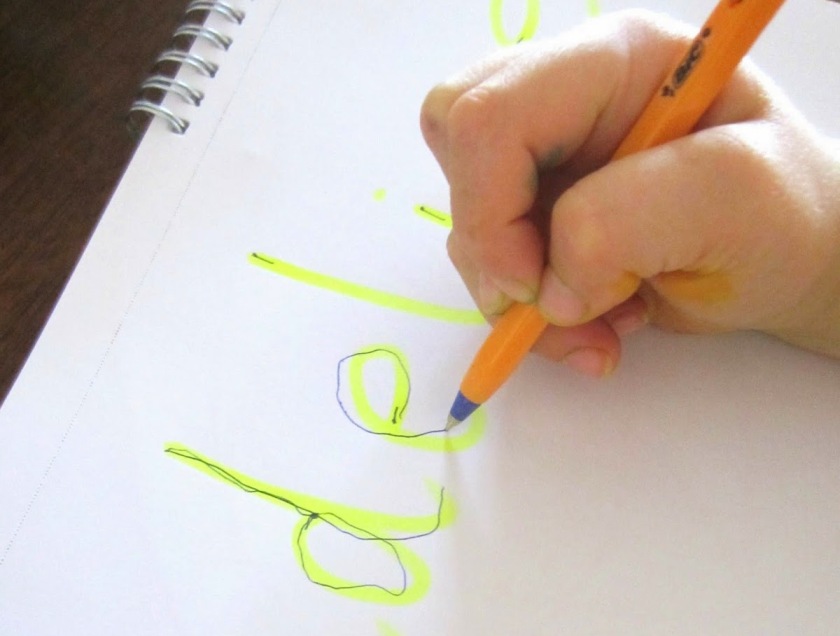6 Tips to Encourage Your Toddler to Write

Writing is a fundamental part of a child’s education. You can start teaching your child to write as soon as he knows how to hold a crayon. However, your child’s interest in learning and how fast he learns to write is largely dependent on the manner in which he’s taught.
Start by showing your child how to scribble on paper with a thick crayon. By doing so, your child will learn how to grip which is a basic skill in writing.
Find more helpful tips below.
1. Make Learning Fun: Children love to play and naturally respond positively when they are having fun. Show your child how to trace dotted lines of alphabets and numbers on different materials like on a board, in pudding, sand or wet paint before trying them on a paper. Hold and direct his hand as he traces. Call out the letters while tracing. This will help him connect the sound with the alphabet. Commend and applaud your child for each new letter he traces correctly.
2. Exercise Patience: When it’s time to learn but your child wants to play, endeavour to exercise patience so as not to send the wrong signal to your child. Raising your voice or threatening the child to write never helps, it only makes your child even more unwilling to write as most children do not like being forced to do anything.
3. Follow Your Child’s Cues: Children generally have a short attention span. There is a limit to what they can handle per time. So you must endeavour to keep your writing lessons short and interesting. If you sense your child is tired or bored, do not mount pressure, give the child a break and continue the lessons later.
READ ALSO: 10 Sure-fire Ways to Make Your Child a Good Reader
4. Encourage: As your child makes progress in writing, always encourage him with positive words. With each new step he makes, let him know he’s doing great and making progress. This will boost your child’s confidence and help him love writing and take the initiative to write himself.
5. Introduce Educational Aids: The use of learning aids for kids cannot be overemphasised. Introduce a variety of pencils with grips specially designed to assist children and adults who find it difficult or tiring to write neatly.
6. Use Visual Aids and Posters: Get books with colourful graphics that will make writing interesting and fun for your child. Put up posters of what he’s being taught on the wall to create a lasting impression in your child’s mind.


Noted. Thanks MIM
Noted
Noted
Tnkx MIM for sharing
Thanks MIM
Well noted! Thanks MIM
Lovely…worth the effort
Noted
Nice one. Thanks for sharing.
ok mim
Right on time MIM. Thanks
Noted,tnx MIM
Noted
Thanks
Thanks for sharing
Great! Thanks MIM
Noted